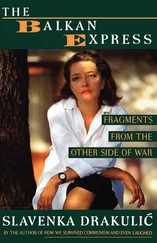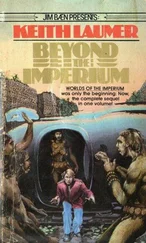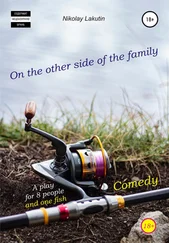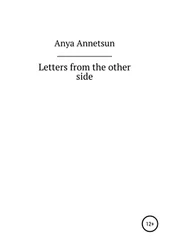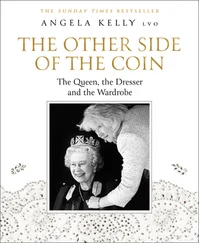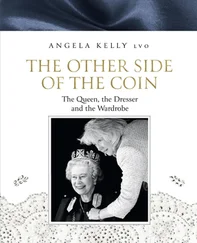1 ...6 7 8 10 11 12 ...18 Hassan, the head of my family, who had come with me, was outside in the street but could see I was getting crushed. He is a big man, and he forced his way through the crowd to reach me so that he could hold me tightly around my shoulders, using his arms to protect me. I could tell how much he feared for my safety, because it is rare for Arab men and women, even husband and wife, to touch in public. But it was the only way to keep me upright and on my feet. When there was a brief gap in the crowd he pushed me forward and I was propelled through the door. The door slammed shut, but with all the hammering on it I feared it would come down. I found myself in a tiny room with a small window, and I remember thinking with a little relief that if I could not get out through the door, at least I could climb through the window.
I gave my ballot card to the Jewish official who was overseeing polling at the station. I also had to give him my ID card, and when he saw that I was a Jew and living in Tamra he gave me a strange look, as though there had been an administrative mistake he could not quite figure out how to correct. * But after a pause he pointed me towards the booth. Behind the curtain were two piles of official voting slips, with the names of Moussa Abu Romi and Adel Abu Hayja. Just before polling day, a rumour had been circulating in Tamra that supporters of the incumbent mayor, Abu Romi, were planning to sabotage Abu Hayja’s chances by printing his voting slips in an ink that would disappear over time, so that when it came to the count all his votes would be blank. My family had persuaded me that I must take with me another slip supplied by Abu Hayja’s party, and I had hidden it in my purse. Standing in the booth, I hurriedly took it out and slipped it into the ballot box. The family’s absolute belief in the truth of the story of the fading ink had led me to believe it myself. I had been so drawn in by the fervour of the elections, by the supreme importance attached to the outcome, that the normal rules of democratic participation could willingly be abandoned.
When I reached the exit door, I wondered how I would ever get out alive. The policeman opened it and I was confronted by a wall of agitated faces. And then everyone appeared to come to their senses. Most of these people I had never met before, but it appeared they knew who I was. In Arab communities the idea of a local newspaper almost seems redundant: by some kind of osmosis, everyone knows everyone else’s news, good and bad. So, as if I were Moses facing the Red Sea, the waves parted. There was, for the first time that day, total silence. As I walked past, people reached out to shake my hand. But as soon as I had reached safety, the scrum resumed.
Apparently there was no truth to the tale of the fading ink, as in the event Abu Hayja was comfortably elected as mayor. The result was not accepted by all of Abu Romi’s supporters: some took to the streets with firearms, and there were several days of flerce confrontations, including a gun battle after which one man was taken to hospital seriously wounded. My family warned me not to go out onto the streets. The violence ended only after the imam called out passages from the Koran over the mosque’s loudspeaker, to calm everyone down.
Word of my presence in Tamra quickly spread further afield, to Haifa and beyond, assisted by an interview I gave to the country’s most famous Hebrew newspaper, Ha’aretz , in September 2003. A short time afterwards I received a phone call from Michael Mansfeld, a senior partner in a firm of architects in Haifa. He said he had been impressed by my critical comments about Israel not having invested in any new housing schemes for the Arab minority in the state’s fifty-five years, despite the population having grown seven-fold. He told me his firm had been appointed by the Interior Ministry to draw up the masterplans for Tamra’s development till 2020, and he wanted to explain what the government had in store. He said I’d be impressed by what I would see. I was sceptical but keen to see the plans, about which no one in Tamra seemed to have been consulted. I invited the newly elected mayor, Adel Abu Hayja, and Amin Sahli, the town planner, to come to my home to see Mansfeld’s presentation.
But before the meeting I talked to Mansfeld privately. I told him about the severe land problems facing Tamra, and that I didn’t see a future for Israel unless Jews and Arabs were able to become equal partners. When he agreed, I asked him: ‘Why do so many Israeli Jews agree with me in private but refuse to speak out?’ He replied that if he spoke publicly, things could be made difficult for him and his business, and that his family was his first priority. His words reminded me that it is not only the Arabs who live in fear of their own state, but Jews of conscience too. It was a depressing realisation. Mansfeld, whose father won Israel’s most prestigious award, the Israel Prize, * is part of what might be termed the establishment Israeli left. If he does not feel he can stand up and be counted, who can? And without more people prepared to speak out and expose the crisis at the heart of the Jewish state, what kind of country will we leave to our children?
The presentation which was supposed to impress us boiled down to the fact that Tamra’s inhabitants would have to accept that there was a shortage of land in Israel. In Mansfeld’s words, ‘From now on we must all build upwards.’ Afterwards, I took a copy of the plans to Professor Hubert Law-Yone, a Burmese academic who came to Israel after marrying a Jewish woman and who is an expert on town planning, based at the Technion in Haifa. He did a few quick calculations and concluded that the plan was bad news for Tamra: based on the population growing to forty-two thousand by 2020, it required very high-density living—eighty-eight people per acre. He suggested that the Interior Ministry brief probably had a hidden agenda, one familiar to the Arab population: the maximum number of Arabs on the minimum amount of land. Its reverse is of course the minimum number of Jews on the maximum amount of land. That is why the Jewish communities around Tamra—farming cooperatives and small luxury hilltop settlements like Mitzpe Aviv—have been allotted land for the benefit of their inhabitants that once belonged to Tamra. That’s also why Tamra’s Jewish neighbours have impressive villas with big gardens, often including swimming pools, and communal parks and playing areas for the children. The plan for Tamra, on the other hand, envisages ever more crowding in a community already stripped of all public space. In Professor Law-Yone’s words: ‘There is plenty of land in Israel. Building upwards is just code for cramming more Arabs in.’
Speaking to Amin later, I sensed that there was almost nothing that Tamra could do to change its bleak future. The government land bodies and the planning committees that set the guidelines for these masterplans are always Jewish-dominated, and often have no Arab members at all. Arab citizens have no voice in their own future, let alone the state’s. Amin was deeply depressed. He had just returned from a meeting of the Knesset’s economics committee which, at the instigation of an Arab Knesset member, Issam Makhoul, had discussed the land and housing crisis in Tamra. Amin had compiled the figures, which showed that the town had little more than a thousand acres for building, all of which was developed. The rest of its six thousand acres were zoned either for farming or as Green Areas which could not be developed. The result, he told the committee, was that because the Interior Ministry refused to release any new land for development, young Arab couples had no choice but to build their homes illegally, often on their own land which was zoned for agriculture. Their parents could not build ‘upwards’ to provide them with an apartment—as Mansfeld had suggested—because they had already reached the building-regulation limit of four storeys for their homes. There were 150 buildings in Tamra under demolition orders, threatening hundreds of young couples and their children with homelessness and destitution.
Читать дальше

